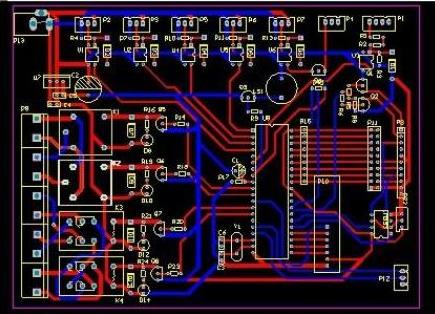The definition of blind buried vias and blind vias by circuit board manufacturers
Speaking of Blind buried orifice, everyone’s understanding and understanding of blind buried vias is very vague, and some circuit board manufacturers can’t explain clearly what exactly is a blind buried via and how do you look at it? Blind and buried vias and how are blind vias, what is buried vias, and the definition and differences of buried vias; let’s talk about the history of circuit boards: the name of the circuit board came out from the 20th century to the beginning of the 21st century. The emergence of circuit boards has led to the rapid technological development of electronic products, and electronic assembly technology has been rapidly improved. As a high-quality circuit board manufacturer of printed circuit boards, only continuous innovation and continuous improvement of the application range and performance of the products can meet the needs of increasingly fast-growing customers.
With the small, light and thin electronic products of circuit board factories, printed circuit boards have developed flexible boards, rigid-flex boards, buried blind vias, etc. First of all, we start with the traditional multilayer board. The structure of the standard multi-layer circuit board contains inner and outer circuits, and then uses drilling and metallization processes in the holes to achieve the internal connection function of each layer of circuits. However, because of the increase in circuit density, the packaging methods of parts are constantly updated. In order to allow the limited circuit board area to place more high-performance parts, in addition to the thinner circuit width, the aperture has also been reduced from the DIP jack aperture of 1mm to SMD's 0.6mm, and further reduced to 0.4mm or less. However, the surface area is still occupied, so buried holes and blind holes are generated. The definitions of buried holes and blind holes are as follows.

Buried Via (BuriedVia)
The buried hole is the through hole between the inner layers. After pressing, it cannot be seen, so there is no need to occupy the area of the outer layer. The upper and lower sides of the hole are on the inner layer of the circuit board, in other words, it is buried inside the circuit board. To put it simply, it is sandwiched in the middle, and these processes are invisible from the surface, so you must ask carefully and understand the documents before producing the buried-hole board, or it will be a big trouble!
Blind Via (BlindVia)
The blind hole board is used to connect the surface layer and one or more inner layers. One side of the hole is on one side of the circuit board, and then it leads to the inside of the circuit board; simply put it That is, the surface of the blind hole can be seen one side and the other side is in the circuit board. It is invisible like a well in our daily life. There is only one opening on the surface, and the water leads to the ground. For circuit board proofing, I recommend that you go to the circuit board factory to try it. Here, the circuit board proofing is online pricing, with fast response, affordable price, fast speed and good quality. Through the above introduction, I hope you can have a certain understanding of blind buried vias. Understand.